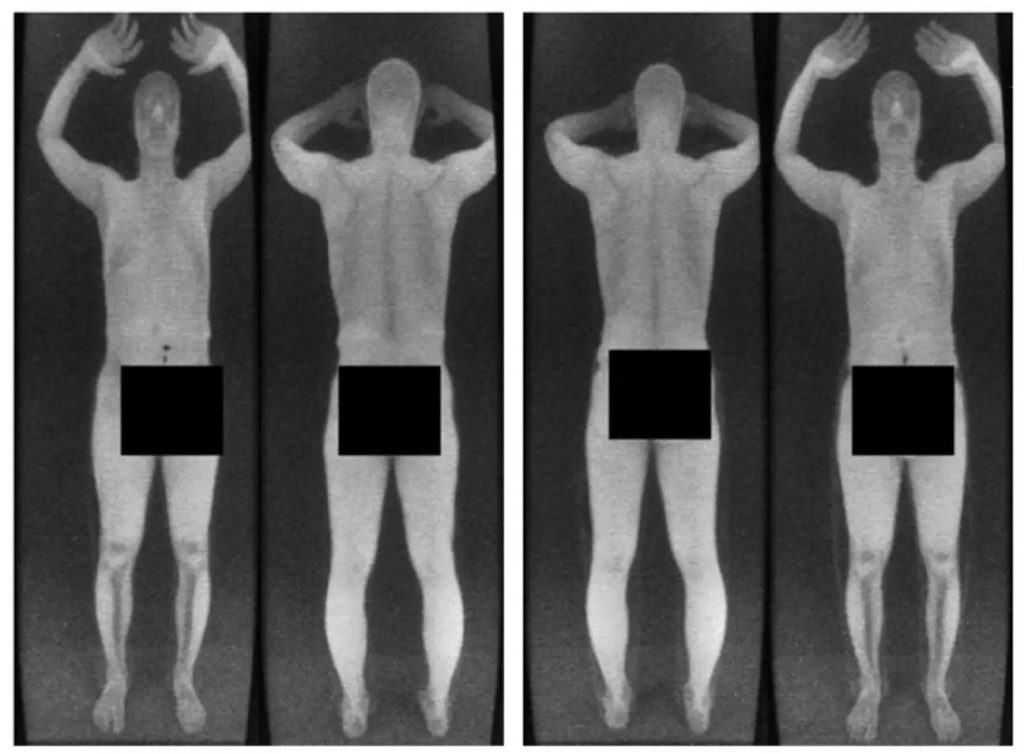Airports have always been a stressful place for travelers. Between the long lines, security measures, and the constant fear of missing a flight, it’s enough to have anyone feeling anxious. But there is one aspect of airport security that raised eyebrows to the point of extreme backlash: body scanners. Do you remember the full-body X-ray machines that were once in widespread use? We sure do. Here’s a brief rundown of what those machines could actually see when you walked through them.
Airport Security: X-Ray Scanner
It all started after a failed underwear bombing in 2009 took place. The event led to the introduction of backscatter technology, in which the Transportation Security Administration (TSA) rolled out scanners capable of producing full-body X-ray images called ‘Rapiscan’ scanners. One hundred seventy-four scanners were reportedly put into use in 30 American airports, all displaying a complete ‘nude’ X-ray of each passenger. This controversy led to a significant backlash, with travelers refusing to go through them, which in turn created a massive security issue and longer queues for travel. Additionally, these Rapiscan scanners were priced at $180,000 each, so taxpayers weren’t exactly thrilled about it.

“I mean, this is airport security, not an OnlyFans account,” remarked one traveler, capturing the shock and discomfort many felt during this era.
To understand how much airport security can see, it’s important to know how body scanners work. The technology was developed by Advanced Imaging Technology (AIT) using millimeter wave scanners.2 These waves are sent through a passenger’s clothing, reflecting off the skin and creating an image interpreted by the machine. The TSA emphasizes that the purpose of this setup is to detect any metallic or nonmetallic threats instead of scrutinizing the physical appearance of the traveler based on hunches.
Privacy Concerns and the Evolution of Airport Security
Early versions of body scanners raised serious privacy issues, as they displayed explicit images of passengers. These scanners were removed from all airports in 2013 for privacy and health reasons, but that does mean there were roughly three or so years worth of airport traveler’s “goods and services” collected. The new millimeter wave machines generate generic images of the body while still looking for any threats to each person.
“Now when passengers are scanned, the machines are supposed to generate generic images of a body instead of the passenger’s unique image,” explains Malvini Redden.
The TSA emphasizes that scanners now generate a generic human form or avatar, ensuring passenger privacy while effectively identifying potential threats. That said, “Millimeter wave imaging technology does not detect items inside a passenger’s body or penetrate the skin,” reassures TSA spokesperson R. Carter Langston.
The purpose of airport body scanners is to detect weapons or any other threats, both metallic and nonmetallic. The TSA claims that the technology is highly effective in detecting potential risks, and who can argue with the logic? That doesn’t stop critics from arguing the machines are not infallible, though, as there have been malfunctions and false alarms. But better to have a system that catches most and misfires occasionally than the other way around, right?
“It works to portray the appearance of taking security seriously,” says Shawna Malvini Redden, questioning the actual effectiveness of the scanners. The machines do work, but it also makes airport security extremely intimidating to visualize smuggling anything through the scanners.
Refusing Body Scanners and Safety Concerns
Travelers do have the right to refuse to go through a body scanner, and alternative security measures like a thorough physical check can be implemented. TSA officials conduct these checks for passenger safety, and it’s important we remember that. The introduction of TSA PreCheck does allow for some security processes to be bypassed, but passengers can still be directed to the body scanner in some cases.
“Passengers don’t have anything to worry about. The AIT scanners are safe,” reassures TSA spokesperson R. Carter Langston.
The evolution of airport security scanners has been marked by controversy, privacy concerns, and ongoing debates about their effectiveness. But as technology advances, it remains to be seen how these security measures will adapt to balance passenger safety with their right to privacy.